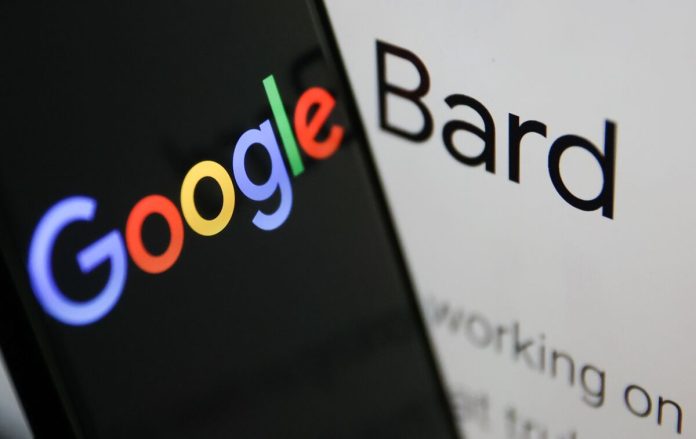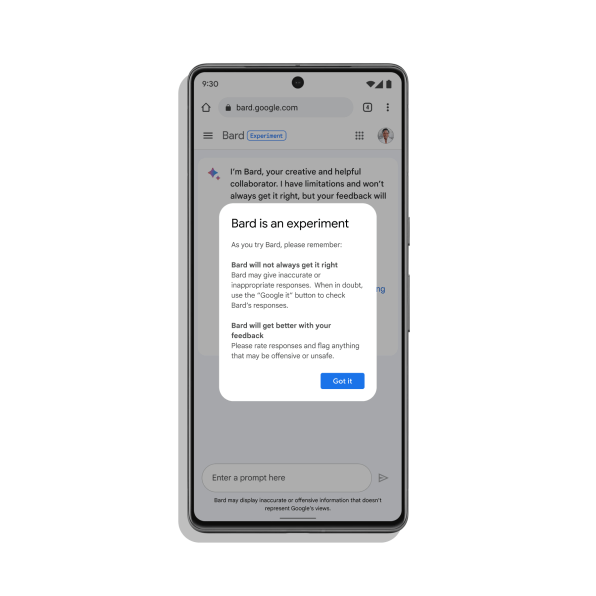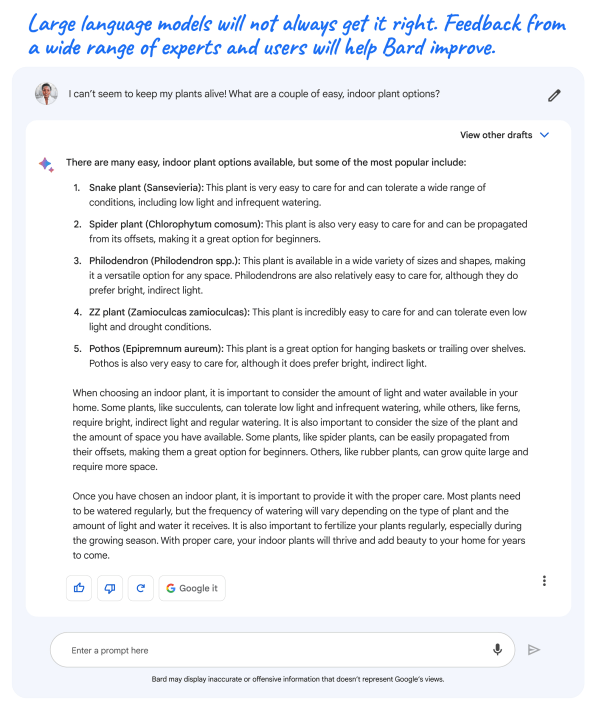
Google has announced that it is ready to release its generative AI chatbot, Bard, to the public. The chatbot, is powered by a lightweight and optimized version of LaMDA. It will be available online as well as on a mobile app. It will be used for generating ideas, researching ideas as well as drafting first drafts of letters, invites, or proposals. The release of Bard marks the first time that Google has released a generative AI chatbot powered by a large language model to the public.
Google Bard
Eli Collins, VP of Product, Google Research, says that his group has been working on language models since 2015. With that being said, he believes that they have come to a point in their understanding & development of generative AI where they are ready to release it to the public. Google is taking pains to emphasize that Bard is a work in progress. The company refers to it as an “experiment,”. One that is prone to making factual errors or simply inventing facts aka “hallucinating”.
Bard has other guardrails around it. The number of back-and-forths per conversation is limited, although Google isn’t saying what the limit is. The company is also blocking Bard from generating computer code, a capability it hopes to add in the future.
Google is keen to point out that Bard is prone to making factual errors or simply inventing facts (“hallucinating”): Just below the bot’s prompt window is the statement “Bard may display inaccurate or offensive information that doesn’t represent Google’s views”. Bard does make factual errors. While Bard can be used in conjunction with Google Search (there’s a Google Search button on the chat interface), by itself, it may be most useful as an idea generation tool.
Google VP of Product Sissie Hsiao points out that the same traits and capabilities that lead Bard to hallucinate also allow it to do creative things such as write poems and stories. In other words, it makes up facts just like it makes up stories. Bard will be available to tens of thousands of users in a gradual rollout starting on Tuesday. Interested users can sign up to try Bard via the waitlist at https://bard.google.com/ .
[H/T] – Fast Company







